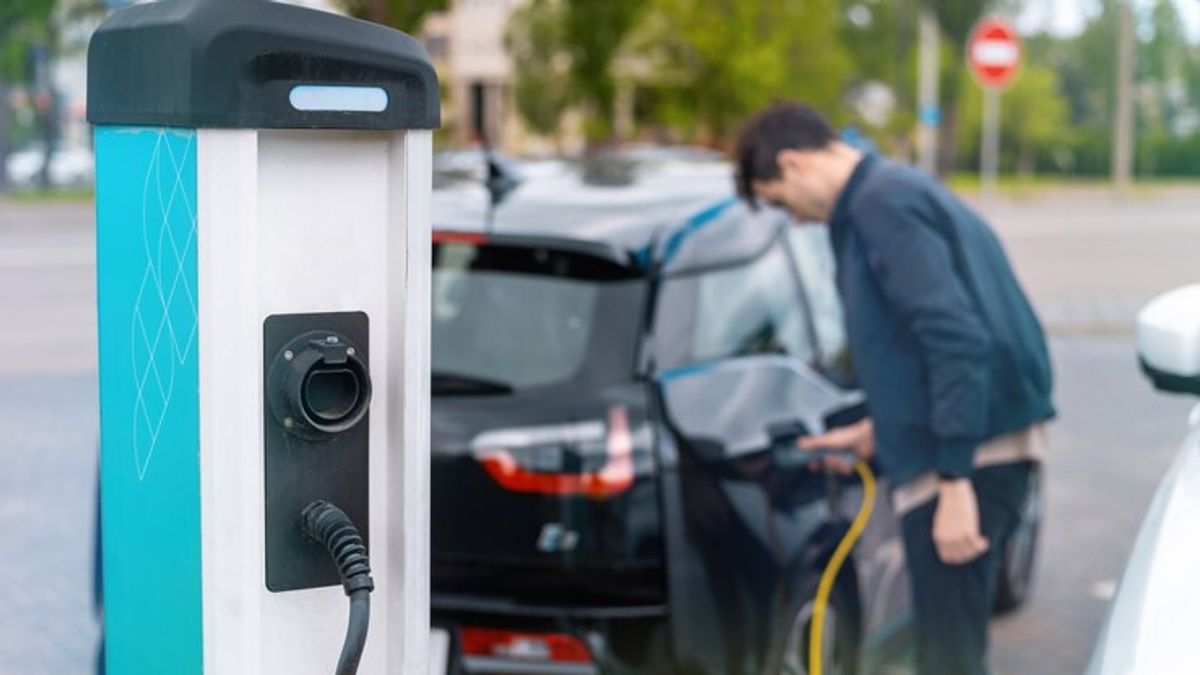YOGYAKARTA - It is estimated that there are 1.4 billion cars on the road globally, and about 5.1 million of them are electric vehicles or Electric Vehicles (EVs). Although only one-third of all consumer vehicles use EV technology, some of the most innovative companies in the global economy are EV manufacturers. So what are the technology in electric cars?
Basically the electric car works by plugging into the charging point and removing the electricity from the grid. They store electricity in a recharged battery that drives an electric motor, which rotates the wheel.
Electric cars are accelerating faster than vehicles with traditional fuel engines so they feel lighter to drive.
Electric cars have 90% fewer moving parts than ICE cars (Internal Combustion Engine). Here are the details of the parts that keep moving:
History of Electric Vehicles
The early history of electric cars began in the early 1820s, when horse trains became commonplace and the world was looking for alternative solutions for animal-powered vehicles. In the early 20th century, electric cars were very popular with socialite and entrepreneurs who could afford them. In fact, nearly a third of all cars on the road were early EVs.
The Fritchle electric vehicle, which was the symbol of a luxury vehicle in 1912, has a range of more than 100 miles on a single charge. Not until mass production of the electric vehicle gasoline-powered Ford Model T fell to the side of the road to pave the way for more economically automated internal combustion engine (ICEVs) vehicles. In the early 1930s, almost no electric vehicle was left on the road.
EV technology was increasingly popular until the early 1970s, as gasoline prices surged to record highs and leading automotive manufacturers began exploring alternative energy methods. But EV high costs, lack of range, and non-existent charging infrastructure limited consumer interest. In the early 1990s, new regulations and incentives in the US made the prospects for hybrid and electric vehicles even more attractive. In the early 21st century, the first modern EV model, such as GM EV1, began to appear on American roads.
Vehicles such as GM EV1, Nissan Leaf, and Toyota Prius are everywhere paving the way for an increase in electric cars.
In 2003, Martin Eberhard and Marc Tarpenning founded Silicon Valley startup Tesla Motors, Inc. Tesla's mission was to create luxury sports cars powered by fully electric motors, and they became one of the first companies to prioritize EV manufacturing over ICEV. Within a decade of the start, Tesla revolutionized the electric vehicle market. Tesla Motors, now called Tesla, Inc., controls 60% of the EV market.
Tesla established itself as a model for high-end electric vehicle technology, making EV technology popular among luxury vehicle enthusiasts and performing vehicles. Other top luxury automotive manufacturers such as BMW and Porsche are developing their own electric vehicles to compete as quickly as possible. In 2019, Tesla's market share forecast on all automotive sales in the US was only 1.5%. There is still a lot of EV growth ahead of us.
After learning about the technology in electric cars, see other interesting news only on VOI, it's time to revolutionize news!
The English, Chinese, Japanese, Arabic, and French versions are automatically generated by the AI. So there may still be inaccuracies in translating, please always see Indonesian as our main language. (system supported by DigitalSiber.id)













